LaTeX templates and examples — Tufte
Edward Tufte is a pioneer in the field of data visualization, and his works have inspired the creation of two LaTeX classes for books and handouts, along with other style elements often present in LaTeX documents. Checkout a selection below.
Seneste
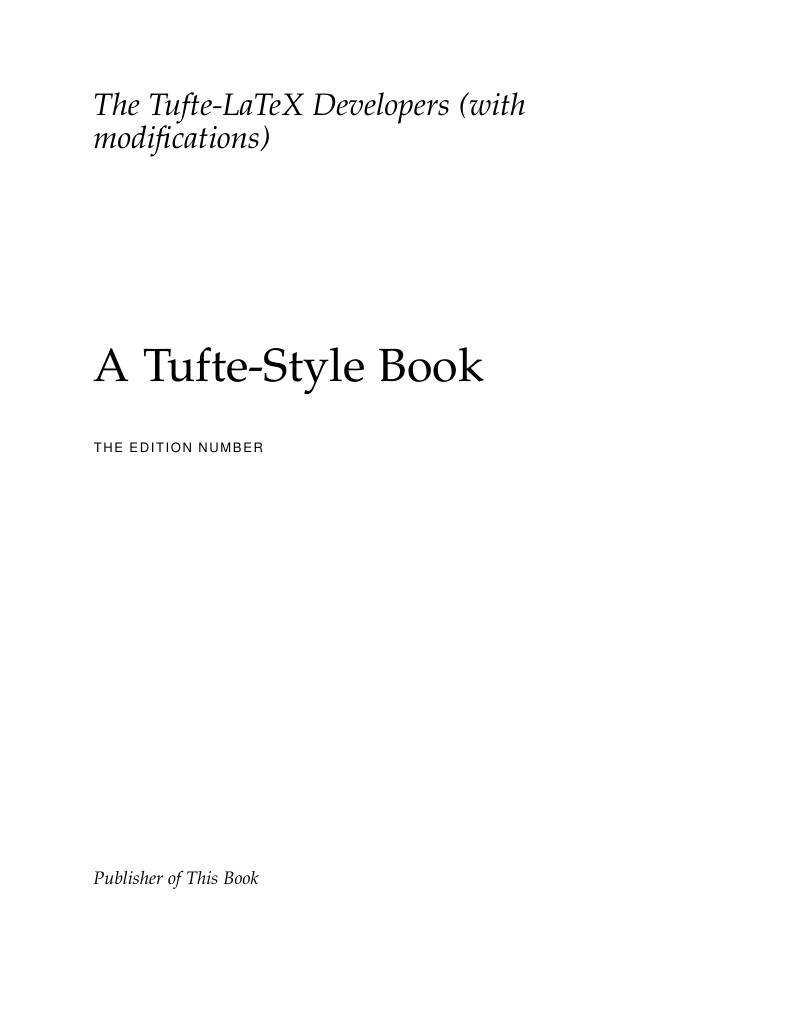
This is a modified version of the Tufte Book example, but with the title page and the contents page resembling Tufte's VDQI book, using Kevin Godby's code from this thread.
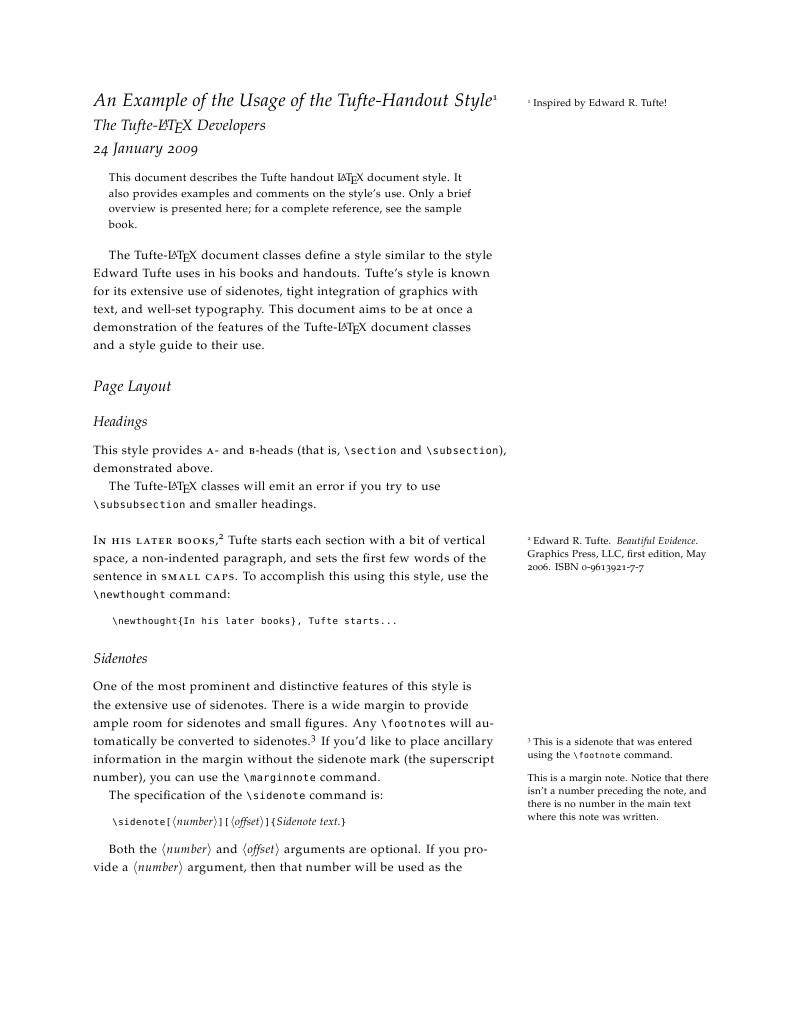
Edward Tufte is a pioneer in the field of data visualization, and his works inspired the creation of two LaTeX classes for books and handouts. Here we present the excellent sample handout produced by the The Tufte-LaTeX Developers pre-loaded into Overleaf (formerly writeLaTeX) for you to use as a starting point for your own work. Simply click on the button above to use Overleaf to create and edit your handout - there's nothing to install and no sign up required. When you're finished, why not use our integrated publish to figshare option to publish your work freely online. Click here if you'd like to try the corresponding Tufte book design on Overleaf. PS: If you're new to LaTeX, our free online LaTeX course covers all the steps you need to get you started.
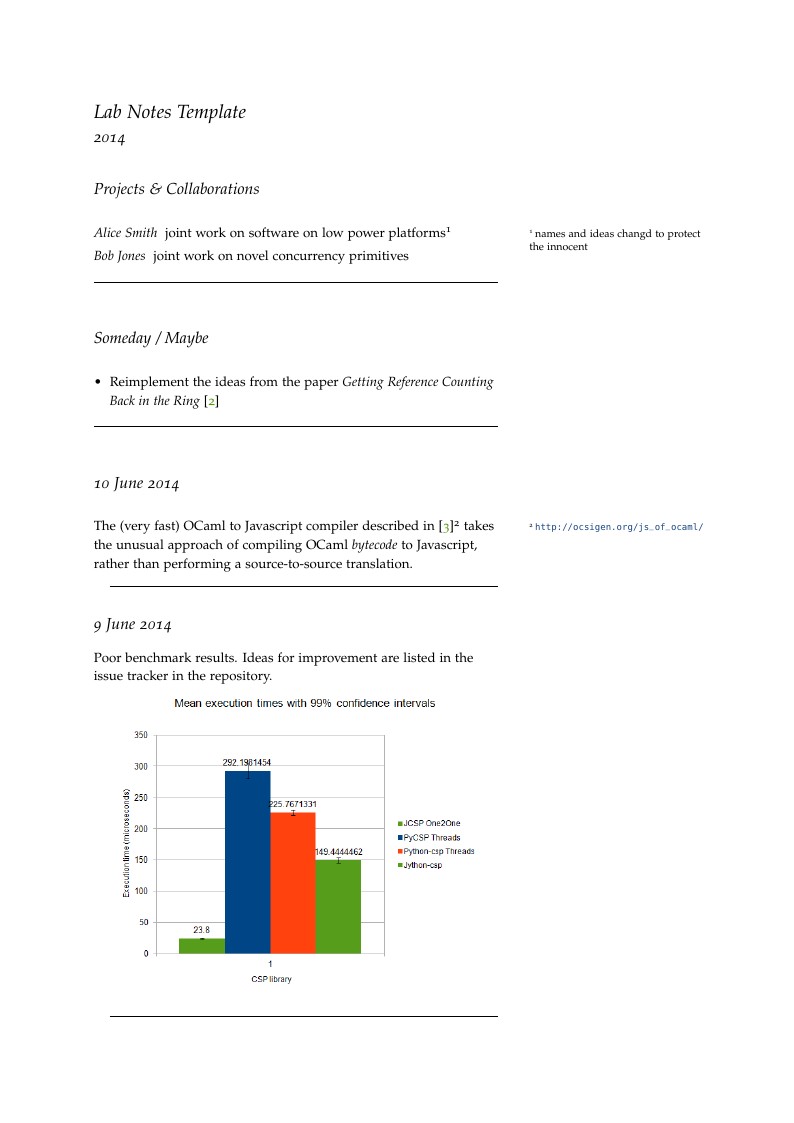
Laboratory Notes Template by Mikhail Klassen, April 2013, Contributions from Sarah Mount, May 2014. This version of the template is based on the tuft-latex class.
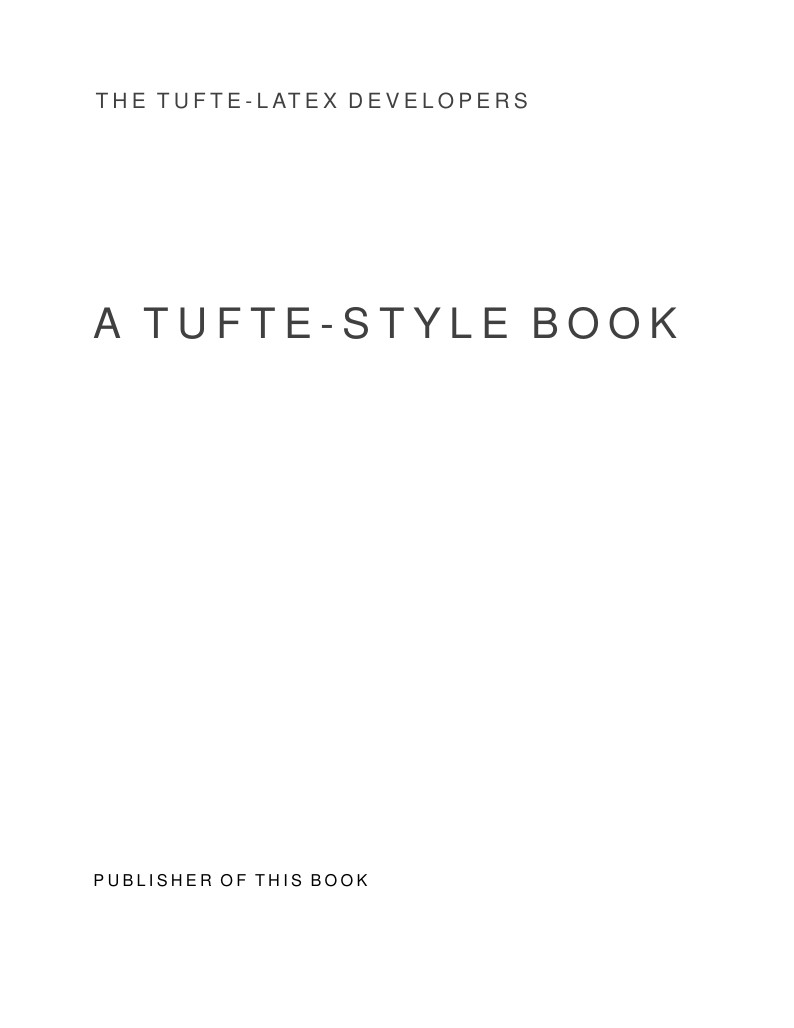
Edward Tufte is a pioneer in the field of data visualization, and his works inspired the creation of two LaTeX classes for books and handouts. Here we present the excellent sample book produced by the The Tufte-LaTeX Developers pre-loaded into Overleaf (formerly writeLaTeX) for you to use as a starting point for your own work. Simply click the button above to use Overleaf to create and edit your article - there's nothing to install and no sign up required. When you're finished, use our integrated publish to figshare option to publish your work freely online. Click here if you'd like to try the corresponding Tufte handout design on Overleaf. PS: If you're new to LaTeX, our free online LaTeX course covers all the steps you need to get you started.
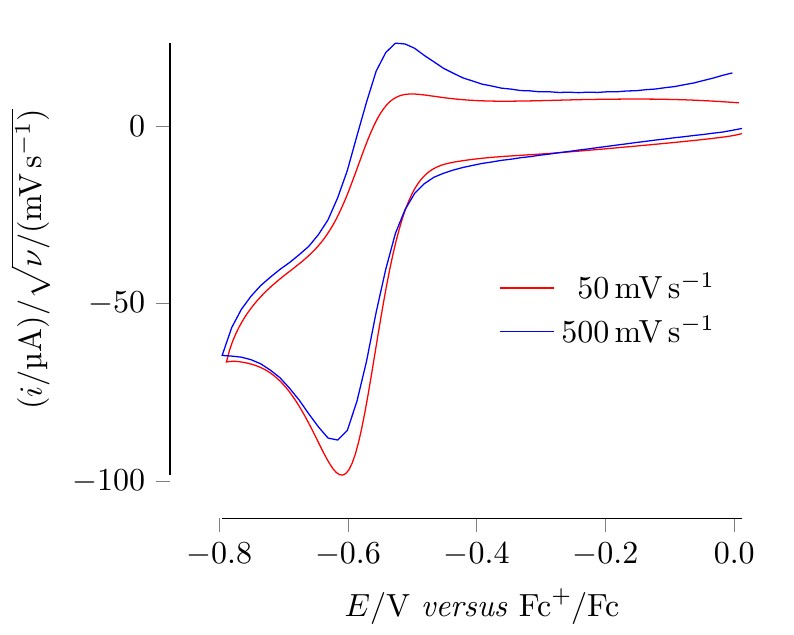
Visualization of chemical experiment data with Tufte style axes, which demonstrates the ability of LaTeX to dynamically generate figures from raw data files. This plot uses two data files and does some calculations in pgfplots to standardise them. It shows 'scan rate normalised cyclic voltammograms', and could more generally be used for 'cyclic voltammetry' results. Original source: http://pgfplots.net/tikz/examples/cyclic-voltammetry/
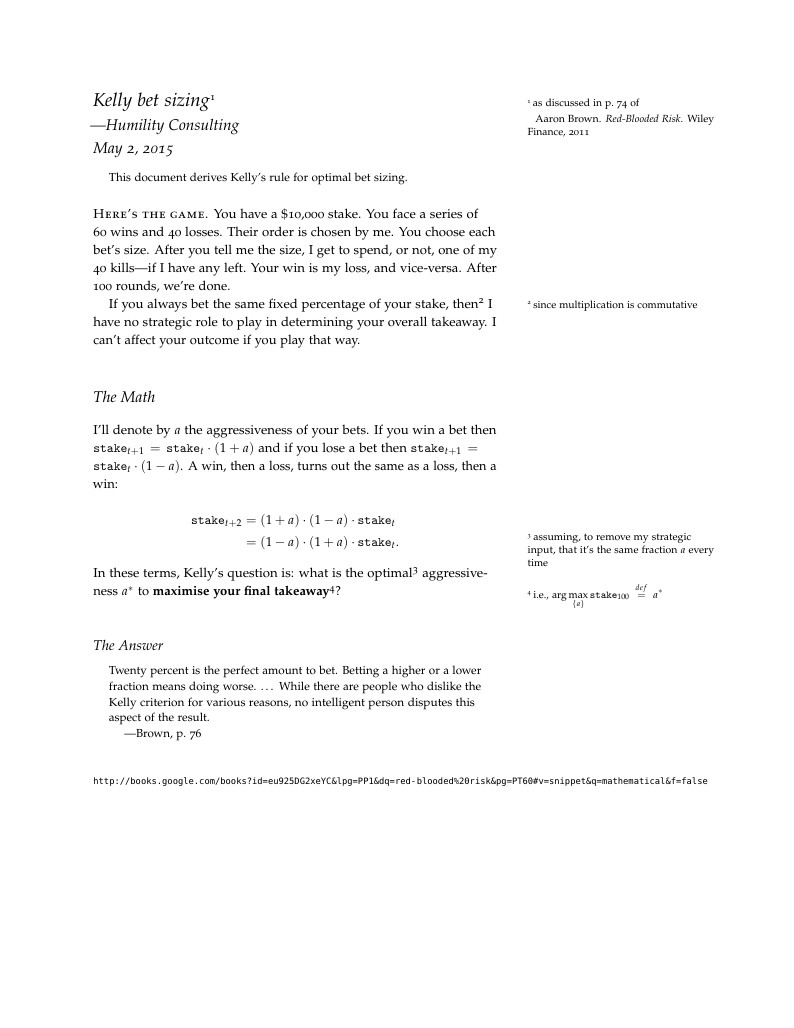
This document derives Kelly's rule for optimal bet sizing.
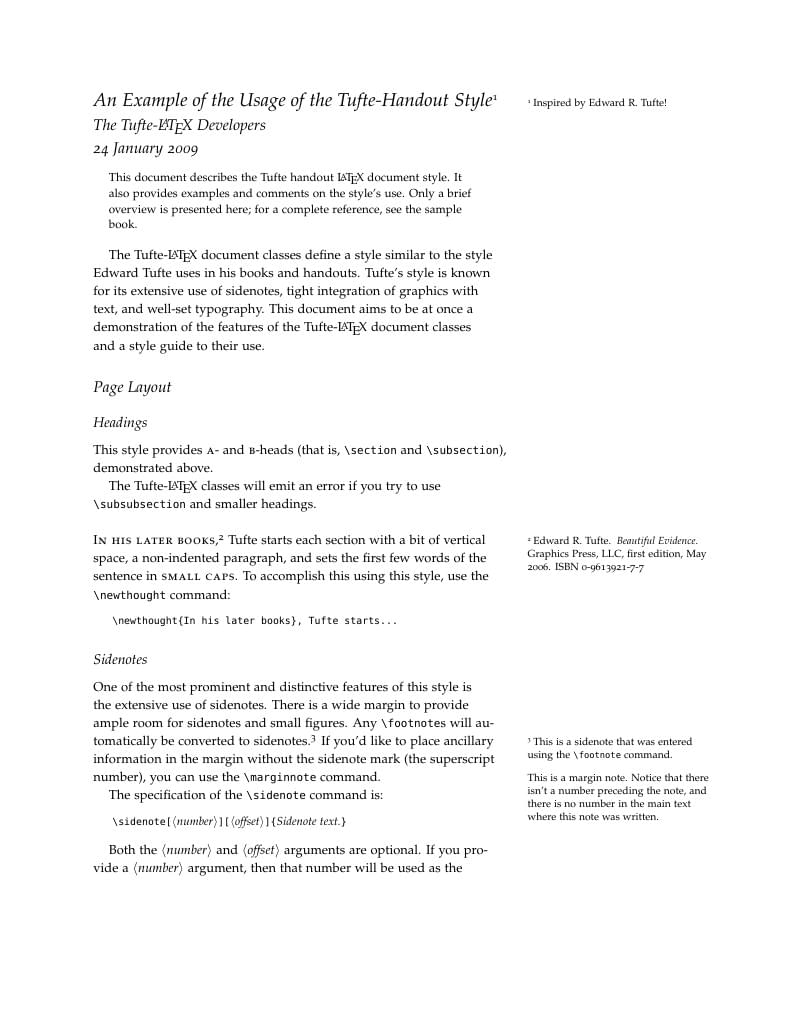
This handout template is developed by the Tufte-LaTeX Developers, designed to produce handouts according to the style of Edward R. Tufte. This style is characterized by narrow main-text column and wide right margin (containing references, notes, table and figure captions, even small figures), giving the light, clean, and elegant look. For further information, see https://tufte-latex.github.io/tufte-latex/. This template was originally published on ShareLaTeX and subsequently moved to Overleaf in October 2019.
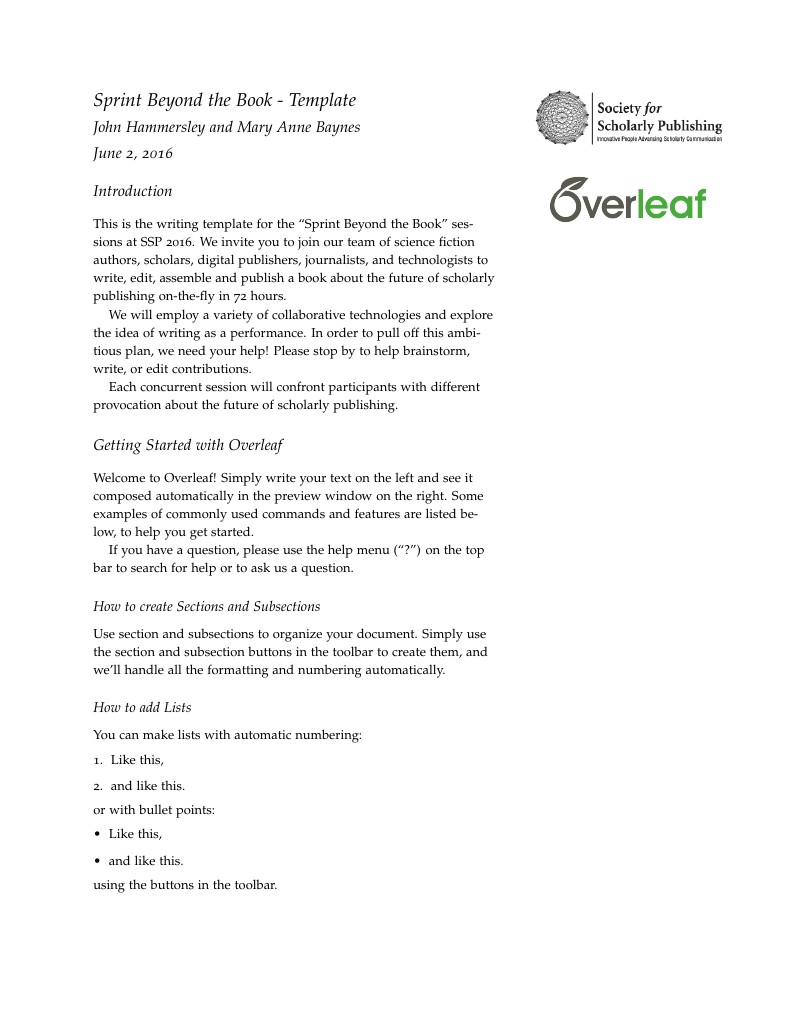
This is the writing template for the ``Sprint Beyond the Book'' sessions at SSP 2016. We invite you to join our team of science fiction authors, scholars, digital publishers, journalists, and technologists to write, edit, assemble and publish a book about the future of scholarly publishing on-the-fly in 72 hours. We will employ a variety of collaborative technologies and explore the idea of writing as a performance. In order to pull off this ambitious plan, we need your help! Please stop by to help brainstorm, write, or edit contributions. Each concurrent session will confront participants with different provocation about the future of scholarly publishing. Find out more about the sessions on the SSP 2016 website.
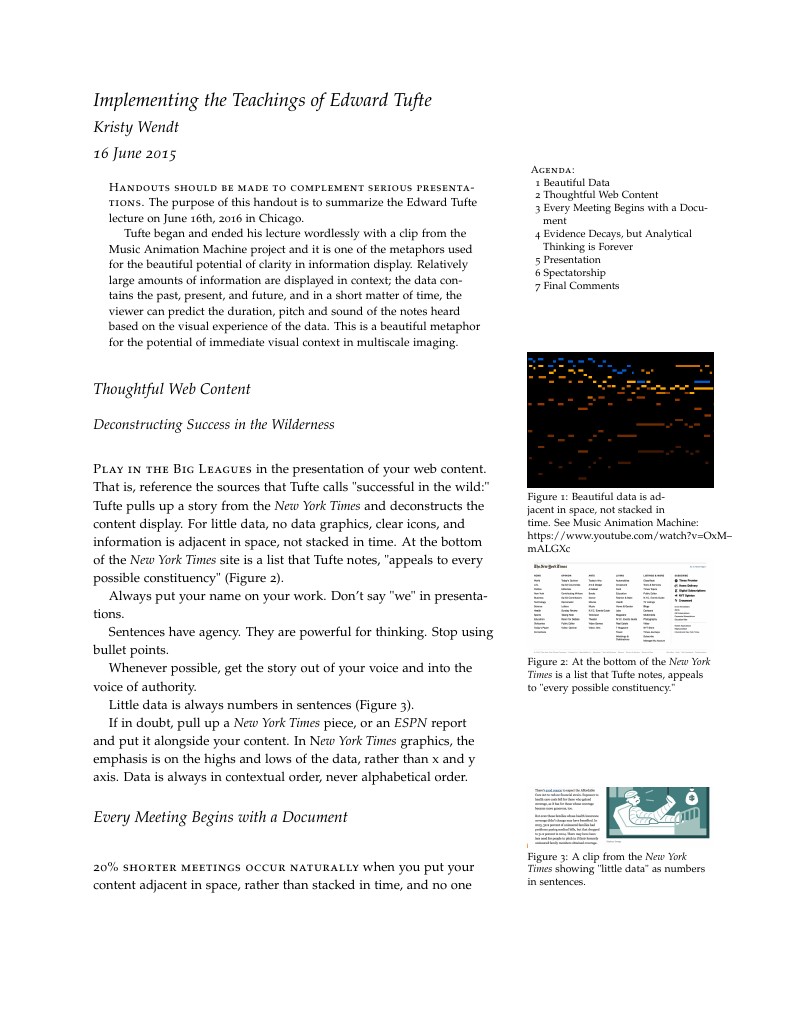
Handouts should be made to complement serious presentations. The purpose of this handout is to summarize the Edward Tufte lecture on June 16th, 2016 in Chicago. Tufte began and ended his lecture wordlessly with a clip from the Music Animation Machine project and it is one of the metaphors used for the beautiful potential of clarity in information display. Relatively large amounts of information are displayed in context; the data contains the past, present, and future, and in a short matter of time, the viewer can predict the duration, pitch and sound of the notes heard based on the visual experience of the data. This is a beautiful metaphor for the potential of immediate visual context in multiscale imaging.
\begin
Discover why over 20 million people worldwide trust Overleaf with their work.